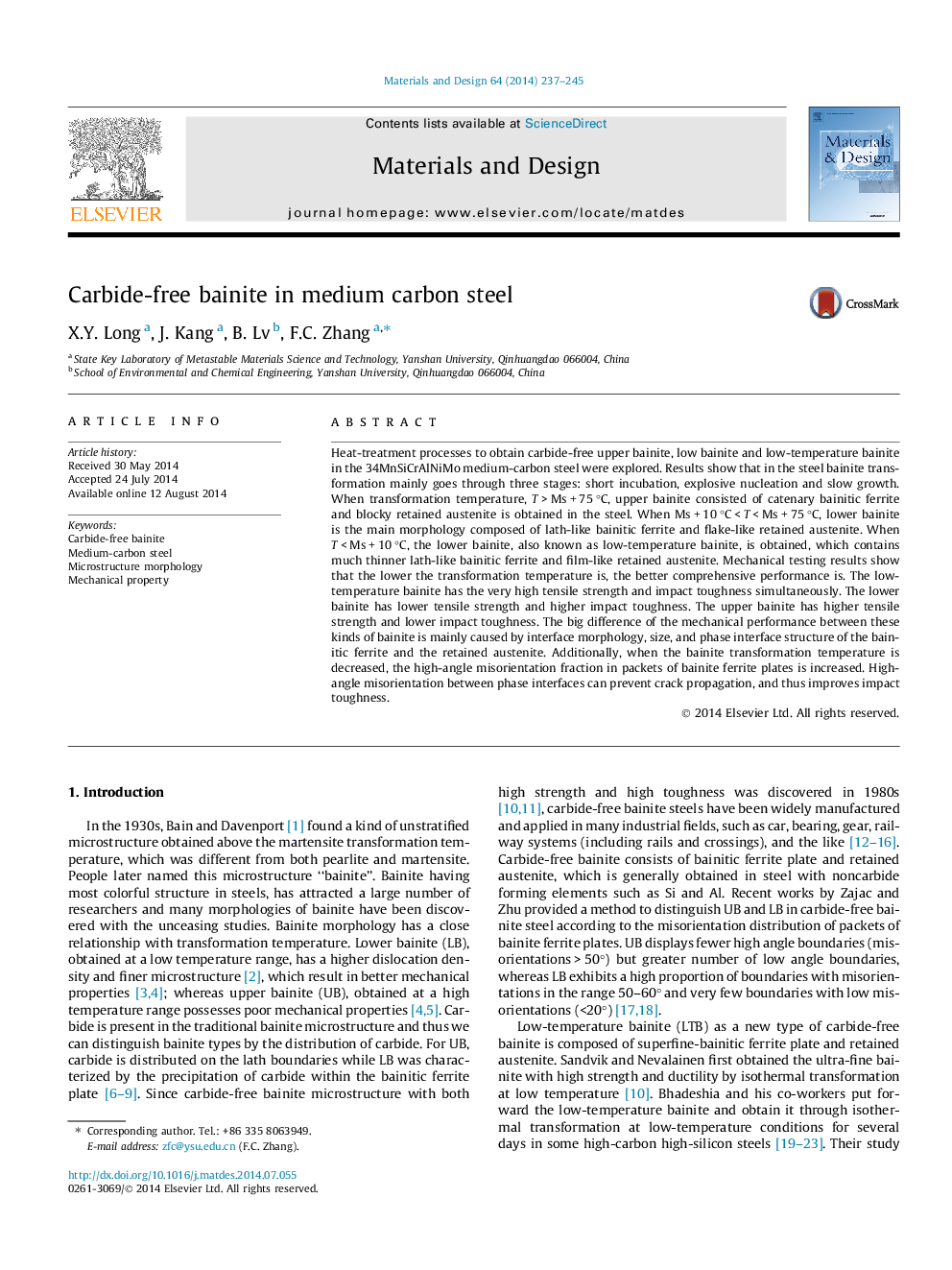| Article ID | Journal | Published Year | Pages | File Type |
|---|---|---|---|---|
| 828901 | Materials & Design (1980-2015) | 2014 | 9 Pages |
•Carbide-free upper, lower, low-temperature bainite temperature range is obtained.•Bainite transformation mainly goes through three stages.•Low-temperature bainite has very high tensile strength and impact toughness.•Microstructure morphology, size and phase interface structure affect property.
Heat-treatment processes to obtain carbide-free upper bainite, low bainite and low-temperature bainite in the 34MnSiCrAlNiMo medium-carbon steel were explored. Results show that in the steel bainite transformation mainly goes through three stages: short incubation, explosive nucleation and slow growth. When transformation temperature, T > Ms + 75 °C, upper bainite consisted of catenary bainitic ferrite and blocky retained austenite is obtained in the steel. When Ms + 10 °C < T < Ms + 75 °C, lower bainite is the main morphology composed of lath-like bainitic ferrite and flake-like retained austenite. When T < Ms + 10 °C, the lower bainite, also known as low-temperature bainite, is obtained, which contains much thinner lath-like bainitic ferrite and film-like retained austenite. Mechanical testing results show that the lower the transformation temperature is, the better comprehensive performance is. The low-temperature bainite has the very high tensile strength and impact toughness simultaneously. The lower bainite has lower tensile strength and higher impact toughness. The upper bainite has higher tensile strength and lower impact toughness. The big difference of the mechanical performance between these kinds of bainite is mainly caused by interface morphology, size, and phase interface structure of the bainitic ferrite and the retained austenite. Additionally, when the bainite transformation temperature is decreased, the high-angle misorientation fraction in packets of bainite ferrite plates is increased. High-angle misorientation between phase interfaces can prevent crack propagation, and thus improves impact toughness.
